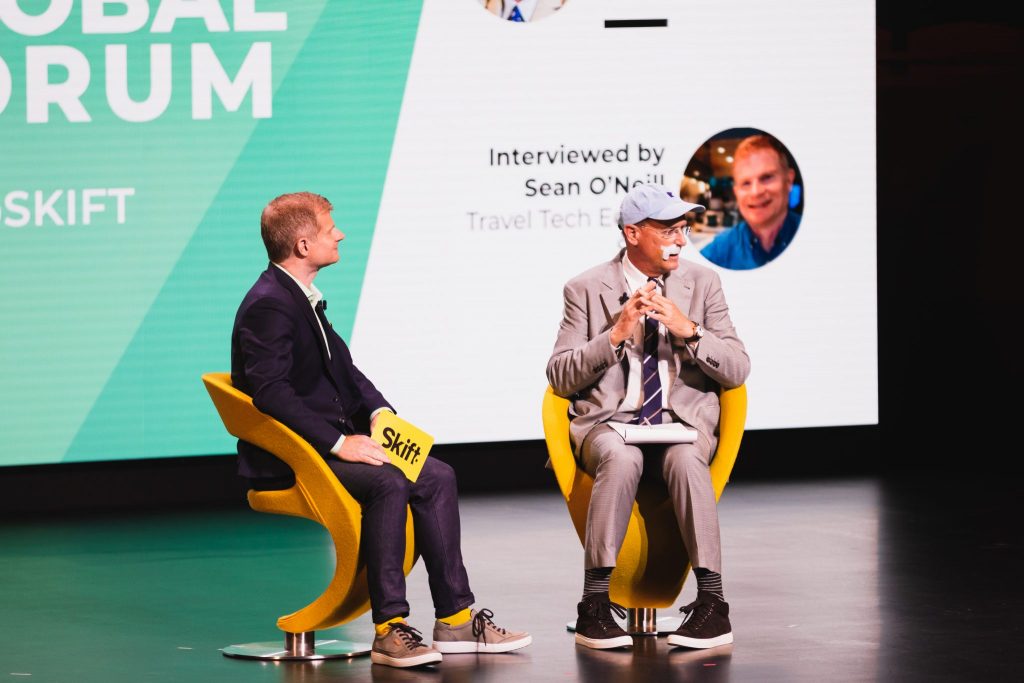Skift Take
Amtrak's modernization effort is underway. If it remains nimble, it can take advantage of shifts in consumer behavior as car ownership declines and travelers look to avoid the headache of heading to the airport for a short flight.
 After a long period of decline, Amtrak has turned around its financial prospects as consumers drive less and travel more.
After a long period of decline, Amtrak has turned around its financial prospects as consumers drive less and travel more.
The goal, however, is to completely modernize Amtrak’s network as the U.S. begins to revitalize its dated infrastructure.
“If you think about how intercity travel works in Europe or Japan, we’ll have to evolve to meet that model,” said Richard Anderson, CEO of Amtrak, at Skift Global Forum 2019 in New York City today. “The densification in urban areas is going to dictate that Amtrak play an important road in short-haul transportation.”
The former Delta Air Lines head honcho credited his team, which has been filled recently with airline executives experienced in revenue management and marketing, for creating the financial turnaround. He projects the famously money-losing railway will break even in 12 months.
“There are a lot of really good people at Amtrak, and those people want the railroad to be successful; we put together a strong plan two-and-a-half years ago and we’ve done well hitting our milestones along the way,” he said.
Perhaps no one is better suited to exploit holes in the domestic short-haul flight network than Anderson with his experience at Delta; he oversaw the airline ending short and less-profitable routes between small cities and rural areas.
“Airlines have abandoned small cities in the Midwest; cities really can’t serve the short-haul market so what’s happened in these really dense markets, like Milwaukee to Chicago, is that Amtrak is over 90 percent market share, no one flies anymore,” said Anderson. “As these urban corridors densify, and all the millennials move to cities and don’t own cars, we gradually take over more and more of the market share from airlines, and 95 percent of our customers go about 250 miles. By 2050, there’s not going to be a choice unless you want to sit in long car delays because you can’t put more lanes on I-95.”
In the long term, Anderson wants Amtrak to be seen as a national asset. A big part of that will be making its stations and trains more accessible, particularly to those with physical disabilities.
“We are in a multiyear effort to make all of the platforms across 500 stations handicap accessible,” said Anderson. “One of the reasons for the new train sets is that they don’t have two doors between every car, the new Acela is being designed for accessibility. It’s a big part of the overall plan, and it gives you the opportunity to make them ADA compliant.”
So will the new, modern Amtrak be selling fares on online travel agencies anytime soon? Probably not. He named the struggles of the hotel sector as a cautionary tale of what he doesn’t want to do.
“We don’t need those distribution channels unless they make sense for us economically,” said Anderson. “We control 85 percent of our distribution, and we want to control that. The hotels gave their brands up, and now they want to claw them back, because you’re not controlling the brand and its display in the marketplace.”
The Daily Newsletter
Our daily coverage of the global travel industry. Written by editors and analysts from across Skift’s brands.
Have a confidential tip for Skift? Get in touch
Tags: amtrak, sgf2019, skift global forum
Photo credit: Amtrak CEO Richard Anderson (right) speaks at Skift Global Forum in New York City on Sept. 19, 2019. Skift
